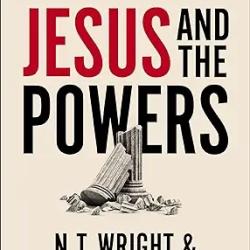 Miles Dewey Davis is, of course, a jazz legend. Without question he is the most influential trumpet player of his entire era, even including figures like Satcho (louis Armstrong) or Dizzy Gillespie. And when he joined forces with such premiere talents as Bill Evans and John Coltrane and Cannonball Adderley and Herbie Hancock and John Scofield (and we could go on and on), his circle of influence only widened and still today is being continually felt and demonstrated in the works of artists as diverse as Christian Scott or Roy Hargrove or even Chris Botti. Miles Davis was and is a game changer, and we need to take his measure.
Miles Dewey Davis is, of course, a jazz legend. Without question he is the most influential trumpet player of his entire era, even including figures like Satcho (louis Armstrong) or Dizzy Gillespie. And when he joined forces with such premiere talents as Bill Evans and John Coltrane and Cannonball Adderley and Herbie Hancock and John Scofield (and we could go on and on), his circle of influence only widened and still today is being continually felt and demonstrated in the works of artists as diverse as Christian Scott or Roy Hargrove or even Chris Botti. Miles Davis was and is a game changer, and we need to take his measure.
Born in 1926 in Alton Illinois, but raised in East St. Louis in a more affluent African American family (his father was a dentist, his mother a capable pianist), Miles was taking trumpet lessons (an instrument picked by his father) by the time he was 13. Unlike many jazz musicians of his era, Miles actually received not only musical lessons but was admitted to Julliard in N.Y. and received some classical training which was to serve him in good stead in his collaborations with Gil Evans. Like many young and talented jazz musicians, Miles chaffed at the formal training, and desired to spend most of his time playing in clubs in New York. His complaint about Julliard was it only taught ‘white European’ music, and in that era, that was a pretty valid complaint. Nevertheless, he later admitted his training their gave him a good handle on music theory, something he would need, for Miles was a prolific composer, not merely a performer and his training both in St. Louis and in New York allowed him to experiment with a wider range of music, including classical or semi-classical compositions, than any other jazz artist of his entire era. As a jazz composer, to a lesser degree as a player, Miles had few peers, and no superiors. It is thus not entirely astonishing to survey the huge scope of the musical styles and trends that he not merely sampled, but in various cases started. Miles’ recording career began at the end of WWII in 1945 and continued until nevar the very end of his life in 1991.
By training, Miles was taught not to use much, if any vibrato in his playing, something which was clearly against the trend in jazz trumpet playing in the 20th century. He came to like the ’rounded’ sound as he called it, without any quaver, and you could recognize in an instant his ‘plain’ style on a record when compared to other trumpet players. In addition that, his fondness for using the mute in many different and varied recordings also gave him a distinctive sound, often imitated, but never to this day equaled.
We could talk about Miles’ struggles with drugs, something which plagued many jazz musicians of that era, including Coltrane and Evans, but somehow, unlike figures like Evans, it did not seem to diminish his art very much, or truncate his career. Though Miles grew up in the be bop and hard bop eras, he was noted for his ‘cool’ playing, and the label stuck in part because his first real landmark album was called ‘Birth of the Cool’. In some ways this style was jazz minimalism, compared to the ‘blowing sessions’ in which it seemed a musician would try to squeeze as many notes as humanly possible into a four bar phrase. As such, Miles’ music is more accessible to some who are not jazz aficionados. Without really intending to be, Miles was also a cross-over musician as well, exploring classical music in a jazz way, and later, pop music in a jazz way. This too gave him a broader audience than most any other jazz artist one could name, with the possible exception of Coltrane. And it certainly didn’t hurt that when he was really emerging in a large way to public eye, his collaboration with Coltrane and Evans, entitled ‘Kind of Blue’ became an instant jazz classic. On October 7, 2008, his 1959 album Kind of Blue received its fourth platinum certification from the Recording Industry Association of America (RIAA), for shipments of at least four million copies in the United States. Miles Davis was inducted into the Rock and Roll Hall of Fame in 2006. Davis was noted as “one of the key figures in the history of jazz.” ‘Kind of Blue’ is the best selling jazz album of all time and still today is a continual seller and rightly so.
It is difficult to select a fair sampling of Mile’s diverse body of work to give the listener an idea of what he accomplished and all the different styles he put his finger prints on, including his ongoing more classical forays with Gil Evans, someone he worked with from about 1947 on, but here is a short list to give one a starter kit for his remarkable body of work.
Really it is necessary to start with ‘Birth of the Cool’ which is actually not a very daring album but has some interesting collaborations with Gerry Mulligan the saxaphonist who wrote various of the tunes on the album. There is in fact only one Miles original on the album— Deception, and it is very brief (2:45). In fact this album was not recorded all at once, but was a series of ‘singles’ which were then collected together under the now famous title, and released in February of 1957. A new era in jazz was dawning, and without entirely realizing it, Miles Davis was himself spearheading it. In fact, even before the release of ‘Birth of the Cool’ Miles had formed his first major quintet, had signed with Columbia Records, and in 1955 had begun a period of collaboration with John Coltrane that literally was to change the face of modern music. Miles first Columbia album ‘Round Midnight’ (named after the famous signature tune of North Carolinian Theolonius Monk who definitely had an impact on Miles), this album already shows great diversity— be bop, and hard bop are in evidence, but so is Miles penchant for ballads, something that would be true throughout his career, and we see as well his nodding in the classical direction too. Miles was one of those musicians who did a good deal to nurture along the gifts of others, and Coltrane and young players like Paul Chambers came into their own while working with Miles. 1958 saw the Stella by Starlight album and Cannonball Adderley was added to the mix, giving Miles two top drawer saxaphonists to work with. One of the things about Miles was that he was not a stage hog, and he was happy to have others solo at various junctures. Not threatened by other strong talented musicians, he actually seemed to attract and acquire them for his own projects and ensembles.
One of the staples of all jazz repertoires is of course show tunes, music for Broadway plays, or later for movies. Miles’ collaborations with Gil Evans (not to be confused with pianist Bill Evans) tends in that direction. A good cross-section can be found on the sampler ‘The Best of Miles Davis and Gil Evans’ (Columbia CK 67425) which will introduce to you Miles doing Gershwin, and one could go on to his whole album of Porgy and Bess tunes. “Sketches of Spain’ is an instant classic in this general sort of genre.
I cannot stress enough the synergy and influence of the Davis-Coltrane collaborations, often with Evans, and my suggestion would be to buy the remastered box set— Miles Davis and John Coltrane (The Complete Columbia Recordings 1955-61). It repays one listening after another, and Columbia has done a fine job of remasters and repackaging things with helpful liner notes. You get remasterings of some of the classic tunes on ‘Kind of Blue’ and even some comments from Miles.
The next major ‘Milestone’ is of course ‘Bitches Brew’ perhaps the second most influential of all of Miles CDs. This work comes some twenty plus years into Mile’s career, in 1969, and is a true game changer. Here we are dealing with jazz fusion and a host of other things, and all sorts of experimental sounds and sonic textures. It is a fascinating listen, but like much of jazz, it takes repeated listenings with concentration to really begin to understand what is going on and to sense the importance of the music. The musicians on this album read like a who’s who of rising jazz stars–Wayne Shorter on sax, Chick Corea on piano, Jack deJonnette on drums, Dave Holland on bass, John McLaughlin on electric guitar. Miles was pulling out all the stops on this one, but one should also compare ‘In a Silent Way’ from this era as well. Thankfully, we now have a beautifully remastered ‘Bitches Brew’ so we can hear all the facets of this truly original composition.
There has been a tendency to disparage late Miles, but you will not hear that from me. Miles had always done ballads and his move to do some pop standards (see his ‘Love Songs’ CD) is not very different from the previous trend. Unlike some jazz musicians, Miles did not feel he had to prove his jazz credentials by ignoring pop and rock music. Instead he drew on it and used it. I can especially recommend some of the late classics like ‘Tutu’ or ‘Amandla’ both of which I love.
You could spend some years exploring the ouevre of Miles Davis, but perhaps the above will be a useful point of entry into his diverse work. One thing is for sure– if you are an American and ignore the work of Miles Davis, you have ignored a huge part of the musical legacy of the twentieth century, in an art form that is distinctively American— jazz.













